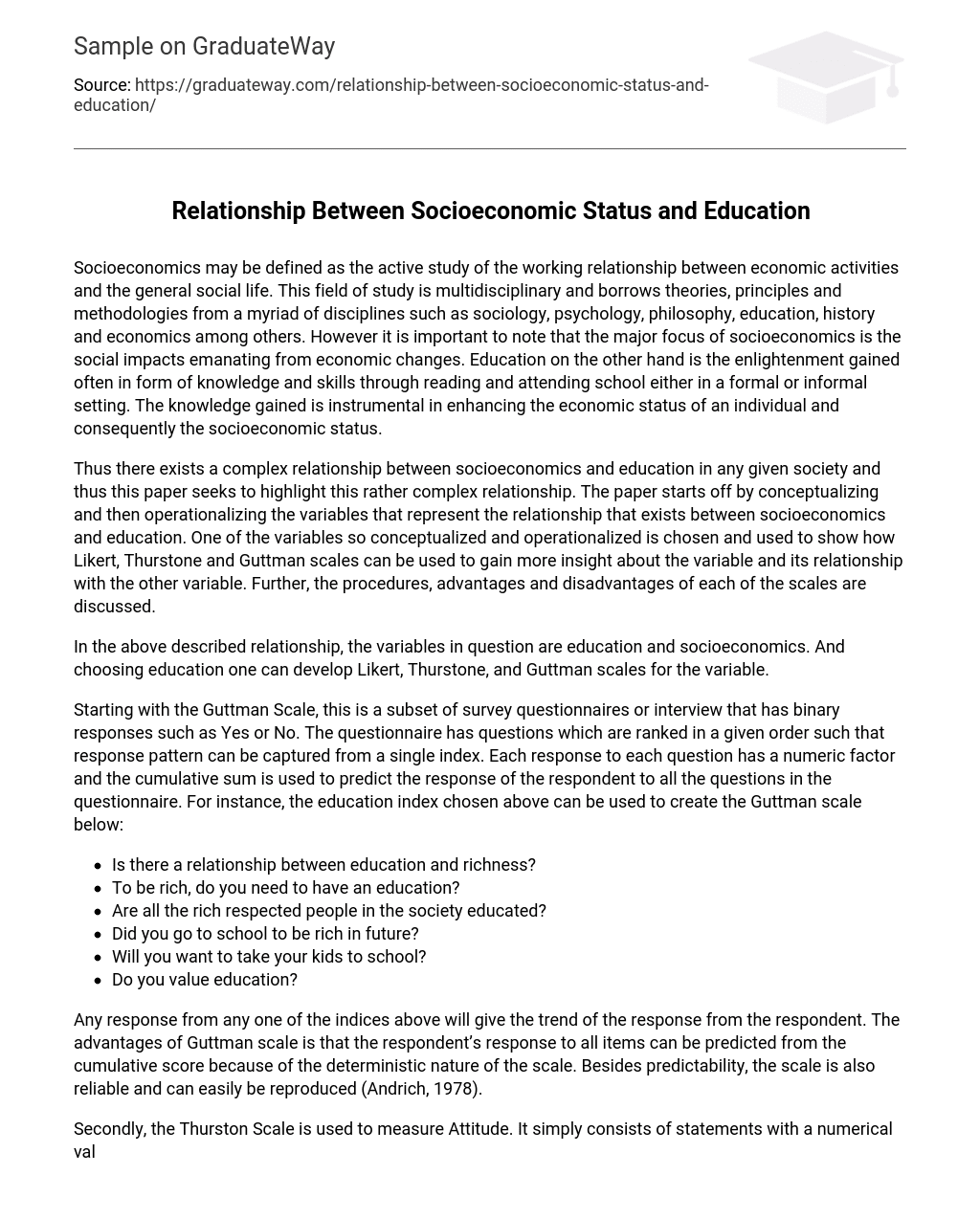Socioeconomics may be defined as the active study of the working relationship between economic activities and the general social life. This field of study is multidisciplinary and borrows theories, principles and methodologies from a myriad of disciplines such as sociology, psychology, philosophy, education, history and economics among others. However it is important to note that the major focus of socioeconomics is the social impacts emanating from economic changes. Education on the other hand is the enlightenment gained often in form of knowledge and skills through reading and attending school either in a formal or informal setting. The knowledge gained is instrumental in enhancing the economic status of an individual and consequently the socioeconomic status.
Thus there exists a complex relationship between socioeconomics and education in any given society and thus this paper seeks to highlight this rather complex relationship. The paper starts off by conceptualizing and then operationalizing the variables that represent the relationship that exists between socioeconomics and education. One of the variables so conceptualized and operationalized is chosen and used to show how Likert, Thurstone and Guttman scales can be used to gain more insight about the variable and its relationship with the other variable. Further, the procedures, advantages and disadvantages of each of the scales are discussed.
In the above described relationship, the variables in question are education and socioeconomics. And choosing education one can develop Likert, Thurstone, and Guttman scales for the variable.
Starting with the Guttman Scale, this is a subset of survey questionnaires or interview that has binary responses such as Yes or No. The questionnaire has questions which are ranked in a given order such that response pattern can be captured from a single index. Each response to each question has a numeric factor and the cumulative sum is used to predict the response of the respondent to all the questions in the questionnaire. For instance, the education index chosen above can be used to create the Guttman scale below:
- Is there a relationship between education and richness?
- To be rich, do you need to have an education?
- Are all the rich respected people in the society educated?
- Did you go to school to be rich in future?
- Will you want to take your kids to school?
- Do you value education?
Any response from any one of the indices above will give the trend of the response from the respondent. The advantages of Guttman scale is that the respondent’s response to all items can be predicted from the cumulative score because of the deterministic nature of the scale. Besides predictability, the scale is also reliable and can easily be reproduced (Andrich, 1978).
Secondly, the Thurston Scale is used to measure Attitude. It simply consists of statements with a numerical value attached to each statement. The respondent simply checks the statement they agree to and a mean score is calculated to indicate the attitude (Likert, 1932). Thurstone assumes in the beginning and sets out to get the respondents to agree or disagree. The advantage of this scale is that it is easy to construct and use in collection of data (Earl, 2007). However, reliability in this scale is very low.
Finally, in a Likert scale, the respondent specifies their level of agreement to a given statement in a questionnaire. For instance a statement like the one below is made:
Education positively enhances the socioeconomic status of an individual;
Strongly disagree
Disagree
Neither agrees nor disagrees
Agree Strongly
Agree
The checked response will show the level of agreement of the respondent. Likert scale is very easy to construct and it is very reliable than the Thurstone scale.
=In conclusion, the scales above are instrumental in the construction of questionnaire to aid in the collection of data which is in turn important in reaching decisions or conclusion. For instance, if these scales are used, a specific relationship between education and socioeconomic status can be established.
References
- Andrich D, (1978): A Rating Formulation for Ordered Response Categories, Psychometrika, 43, 357-74
- Likert R, (1932): A Technique for the Measurement of Attitudes, Archives of Psychology 140: 1–55
- Earl B, (2007): The Practice of Social Research, 7th Edition, Champman Universit





